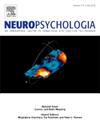The medial prefrontal cortex contributes to representing shared goals among group Members: Evidence from tDCS
IF 2
3区 心理学
Q3 BEHAVIORAL SCIENCES
引用次数: 0
Abstract
People often generalize the actions of known group members to unfamiliar members based on their goals. This goal-based action generalization is constrained by the belief that group members have a shared goal, which typically results in a nongraded pattern where the extent of generalization does not gradually increase with the prevalence of action goals. In the present study, 90 healthy participants (aged 15–27) were randomly assigned to three equal groups, each receiving one of three types of transcranial direct current stimulation (tDCS) targeting the medial prefrontal cortex (mPFC): anodal (anodal electrode over Fpz, return electrode over Oz), cathodal (reverse montage), or sham stimulation. In the implicit task, cathodal stimulation—diminishing mPFC excitability—weakened the representation of the shared-goal belief, leading to a graded generalization pattern in which expectations increased with action prevalence. In contrast, both anodal and sham stimulation produced the typical nongraded pattern. In the explicit task, both anodal and cathodal stimulation produced the similar graded generalization, while sham stimulation preserved the nongraded pattern. These findings suggest that the medial prefrontal cortex (mPFC) is involved in representing the belief that group members have a shared goal. This study advances our understanding of how the mPFC contributes to social cognition by integrating beliefs with statistical evidence to guide action expectations.
内侧前额叶皮层有助于代表群体成员之间的共同目标:来自tDCS的证据。
人们经常根据目标将已知群体成员的行为推广到不熟悉的群体成员。这种基于目标的行动泛化受到群体成员有共同目标的信念的限制,这通常导致泛化程度不会随着行动目标的普及而逐渐增加的非分级模式。在本研究中,90名健康的参与者(15-27岁)被随机分为三组,每组接受三种针对内侧前额叶皮层(mPFC)的经颅直流电刺激(tDCS):阳极(阳极电极在Fpz上,返回电极在Oz上),阴极(反向蒙太奇)或假刺激。在内隐任务中,阴极刺激减少了mPFC的兴奋性,削弱了共同目标信念的表征,导致了期望随着行动盛行而增加的分级泛化模式。相反,阳极刺激和假刺激都产生了典型的非分级模式。在外显任务中,阳极刺激和阴极刺激均产生了相似的分级泛化模式,而假刺激则保留了非分级泛化模式。这些发现表明,内侧前额叶皮层(mPFC)参与表达群体成员有共同目标的信念。本研究推进了我们对mPFC如何通过整合信念和统计证据来指导行动期望来促进社会认知的理解。
本文章由计算机程序翻译,如有差异,请以英文原文为准。
求助全文
约1分钟内获得全文
求助全文
来源期刊

Neuropsychologia
医学-行为科学
CiteScore
5.10
自引率
3.80%
发文量
228
审稿时长
4 months
期刊介绍:
Neuropsychologia is an international interdisciplinary journal devoted to experimental and theoretical contributions that advance understanding of human cognition and behavior from a neuroscience perspective. The journal will consider for publication studies that link brain function with cognitive processes, including attention and awareness, action and motor control, executive functions and cognitive control, memory, language, and emotion and social cognition.
 求助内容:
求助内容: 应助结果提醒方式:
应助结果提醒方式:


